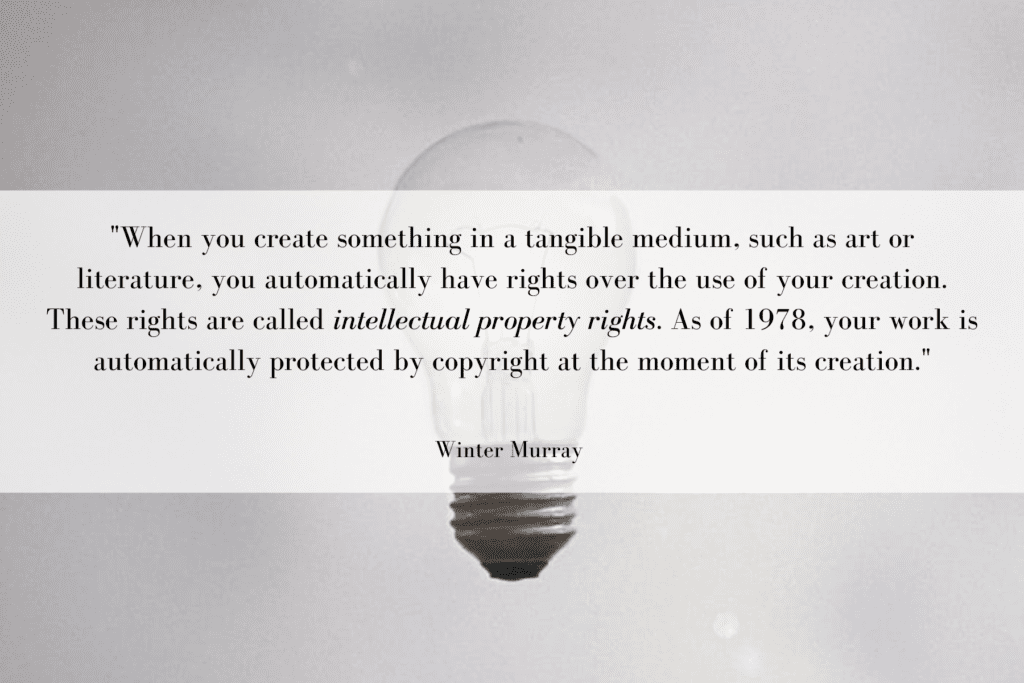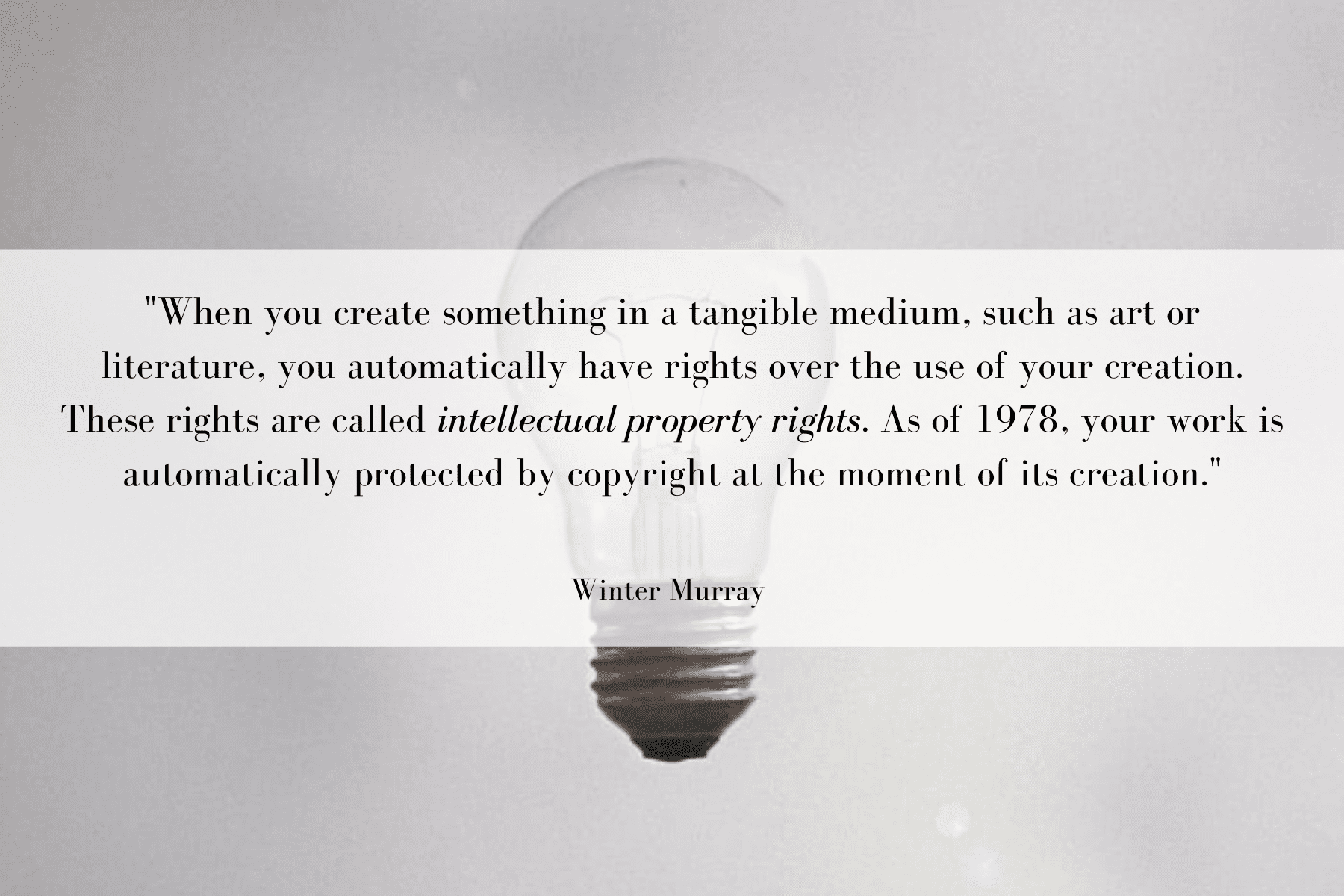by Winter Murray
If you’re any kind of creator, you should take some time to familiarize yourself with your rights when it comes to ownership of your work. When you create something, your creation is what’s known as intellectual property. According to the World Intellectual Property Organization, “intellectual property (IP) refers to creations of the mind, such as inventions; literary and artistic works; designs; and symbols, names and images used in commerce.” Your work doesn’t have to be published in order for it to qualify as intellectual property, and you therefore have rights when it comes to the use and distribution of your creation.
When you create something in a tangible medium, such as art or literature, you automatically have rights over the use of your creation. These rights are called intellectual property rights. As of 1978, your work is automatically protected by copyright at the moment of its creation. You don’t have to register with the US Copyright Office (USCO) for automatic protection, and unpublished intellectual property is also protected by copyright. However, in order to enforce your rights over your unpublished works, you do need proof that you are the person who created the work and proof of when it was created.

With some limitations and exceptions, your rights as a creator are automatically protected for a minimum of 50 years after your death. However, without formally registering a copyright for your intellectual property with the USCO, your right to take legal action if someone uses your work without permission is limited. Copyright infringement can be deliberate or just due to ignorance, but people who infringe on copyright can still be held accountable for taking credit for something that they didn’t create. The laws regarding copyright can be complicated and highly dependent on circumstance, so it’s important to take steps to protect your intellectual property regardless of publication status.


